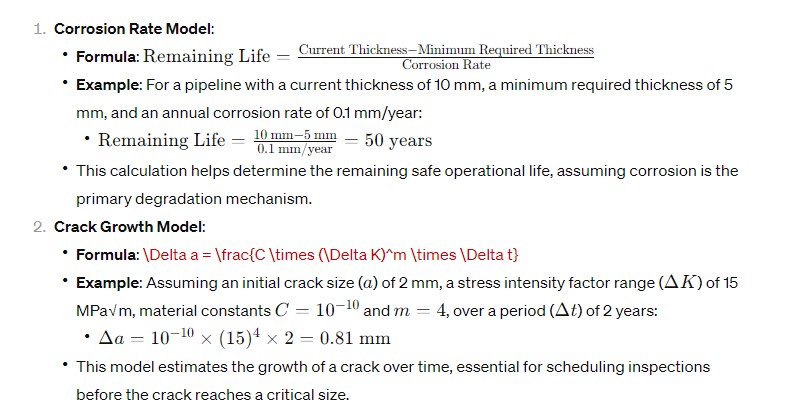Watch our Most Recent Videos | Visit us on LinkedIn | Visit us on YouTube
API 581 RBI Probability of Failure Calculations
API 581 RBI Probability of Failure Calculations are essential for accurately assessing the risk levels of industrial assets, allowing organizations to prioritize maintenance and inspection activities based on scientifically derived data. These calculations, which are part of a comprehensive Risk-Based Inspection (RBI) strategy, utilize a blend of historical data, operational conditions, and material properties to estimate the likelihood of equipment failure. For professionals looking to enhance their expertise in this area, the I4I Academy’s API 580 risk-based inspector training course provides a solid foundation for understanding and applying these complex calculations.
Introduction to API 581 RBI Probability of Failure Calculations
API 581 establishes a structured methodology for calculating the Probability of Failure, an integral part of the risk assessment process in industrial settings. This section outlines the core principles behind PoF calculations, explaining how they incorporate various risk factors to provide a quantifiable measure of potential equipment failure. Understanding these principles is crucial for effectively implementing RBI programs and ensuring the longevity and reliability of critical infrastructure.
Key Data Inputs for API 581 PoF Calculations
Accurate PoF calculations depend heavily on the quality and completeness of input data. This subsection elaborates on the essential data types required for effective PoF calculations:
- Operational Data: Includes parameters like pressure, temperature, and chemical exposure that directly affect the operational integrity of the equipment.
- Material Properties: Information on corrosion resistance, fracture toughness, and fatigue strength of materials, which influences their susceptibility to various failure mechanisms.
- Inspection and Maintenance History: Records of previous inspections, repairs, and replacements, providing insights into the equipment’s historical performance and existing anomalies.
Gathering and validating these data inputs are fundamental steps in performing reliable PoF calculations.
Calculating Probability of Failure: Methods and Examples
API 581 offers various models for calculating the Probability of Failure, each tailored to specific failure mechanisms such as corrosion, cracking, or mechanical failure. Here, we explore a few models with hypothetical examples to illustrate how these calculations are performed:

Enhancing RBI Skills with I4I Academy’s API 580 Training
hile the API 580 course at I4I Academy doesn't specifically focus on API 581’s quantitative models, it lays the groundwork necessary for understanding risk analysis, including basic Probability of Failure calculations. This section discusses how the API 580 course prepares professionals to tackle more advanced concepts in API 581 by providing a comprehensive understanding of risk factors, data analysis techniques, and the fundamental principles of RBI.
In conclusion, mastering API 581 RBI Probability of Failure Calculations allows professionals to implement more effective and efficient risk-based inspection strategies. By utilizing detailed data and sophisticated models, organizations can predict potential failures more accurately, optimizing maintenance efforts and enhancing overall safety. Moreover, training programs like I4I Academy’s API 580 course equip professionals with the critical skills needed to understand and apply these calculations, ensuring the successful integration of RBI strategies in industrial operations.
Free newsletter!
Sign up to receive my monthly newsletter covering all the latest courses and updates.




New! Comments
Have your say about what you just read! Leave me a comment in the box below.